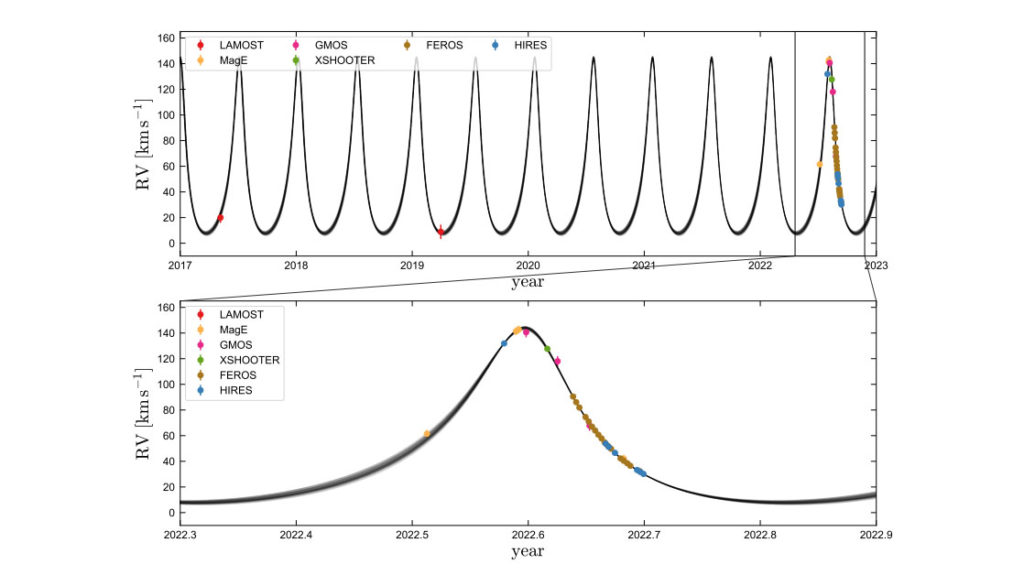An international team of astrophysicists studied data collected by the Gaia space observatory in search of black
Scientists have explored all 168,065 stars, informationwhich are contained in the third release of the Gaia data (GDR3) and which were candidates for binary systems. In such pairs, two stars act on each other, creating unusual orbits.
Researchers are interested in one star, GaiaDR3 4373465352415301632. It is a yellow dwarf that resembles the Sun. Based on observations of the star's orbit - it describes an ellipse around an invisible component - the researchers concluded that there must be a black hole nearby.
 Radial velocity of a star reconstructed from multiple observations. Image: Kareem El-Badry et al., arXiv
Radial velocity of a star reconstructed from multiple observations. Image: Kareem El-Badry et al., arXiv
To validate the conclusions andTo rule out alternative explanations for the strange orbit, astrophysicists have studied the yellow dwarf with other telescopes. Spectroscopic observations confirmed the "dark nature of the companion" and showed that the size of the black hole is about 10 solar masses.
Models predict that the Milky Way containsabout 100 million black holes, scientists add. But so far only about 20 of them are known. All previous discoveries have been related to the powerful X-ray emission that occurs when a black hole absorbs the matter of its companion. New Candidate: Our Galaxy's First Sleeping Black Hole, Invisible in the X-Ray Spectrum.
The researchers believe that using the method they used and new data from the Gaia mission, it will be possible to find many more hidden black holes near the Sun.
The Gaia Space Observatory is a telescopeEuropean Space Agency, which has been studying the stars of the Milky Way for almost a decade. During this time, astronomy has measured the positions, distances, and proper motions of almost a billion astronomical objects, such as stars, planets, comets, asteroids, and galaxies. By tracking the movements of objects in orbit around the center of the Galaxy, the Gaia mission aims to create the most accurate 3D cosmic catalog.
Read more:
A huge satellite can outshine all the stars and planets in the night sky
China says they will have fusion power in 6 years
Developed generator for wind farms without expensive magnets